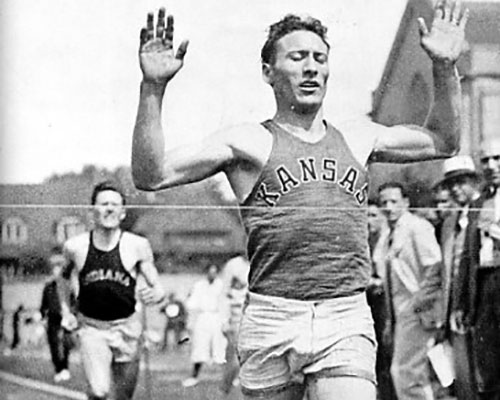
William “Bud” Hart, of Haverhill, shares “Success Principles”—ideas for living a greater, better and more accomplished life, and building habits that stick. He also coaches clients to incorporate strategies for boosting their mental and physical performance during everyday living.
Whenever something undesirable happens to us it is hard to picture a time—days, months and years later—that it may good. Yet if I ask, just about anyone would be able to tell me about some event in their life that seemed bad initially, but later turns out to be the best thing that could have happened. I wrote these words in an article recently and was told by someone who read the piece that they doubted this to be true.
It is not worth arguing the truth with anyone, but that is how it has always worked out in my life and in the lives of many, many others that I have read about. One inspirational story in particular is the story of Glenn Cunningham. I came across his story from a book “The Milers,” by Cordner Nelson and Roberto Quercetani, while researching information about the importance of weight training and pacing for improving the overall race times for competitive runners.
In their book, Nelson and Quercetani note the1930s was period in history that saw great improvements in running technique and runners, including Glenn Cunningham. On March 3, 1938, at the age of 28, Cunningham showed both his endurance and his understanding of race pacing methods when he ran an unofficial, but outstanding mile in 4:04.4. What is so inspiring about this man is not the feat, not that he came so close to breaking the 4-minute mile barrier many years before Roger Bannister did it in 1954, but that he was able to run at all.
Glenn Cunningham and his brother Floyd were badly burned in a fire in 1916 when Glenn was only six years old. Floyd died as a result of his burns. Glenn was proclaimed to be more dead than alive immediately after being burned and was given little hope of surviving. The doctors urged that his badly burned legs be amputated, but his mother refused. Glenn had lost all the toes on his left foot, the flesh on his knees and shins and his right leg was grossly deformed and a full two inches shorter than the left leg. He was unable to walk.
With all this most people would not do what Glenn did. He was determined to walk again, and he endured an excruciating painful routine. Every day for weeks on end he dragged himself and pulled himself up at a fence in this yard and worked on getting his legs to function. Over a period of months, he began to walk and soon discovered that his legs didn’t hurt at all when he ran. From then on he ran everywhere and by the age of 12 was outrunning everyone in his age group in Elkhart, Kansas where he went to school.
Glenn Cunningham took his running and his determination and will to the University of Kansas in 1930. He went on to run the fastest mile ever for that period in an outdoor meet and received the award for the top amateur athlete in the United States in 1933. As Nelson and Quercetani noted in their writing Cunningham admired endurance, perhaps the result of those bleak days of his childhood spent dragging his almost lifeless legs to the picket fence in the back yard.
Glenn Cunningham is a story of something undesirable that happens being turned into something good. He is quoted as saying about his life, “If you stay in the running, if you have endurance, you are bound to win over those who haven’t.” We would all be wise to read his story and keep his words in mind as events unfold in our lives today and everyday.
William “Bud” Hart is a certified “Mindset” Coach, Accountability Partner and Business Consultant. Visit Hart Group, www.hartgroupma.com for more on coaching.
